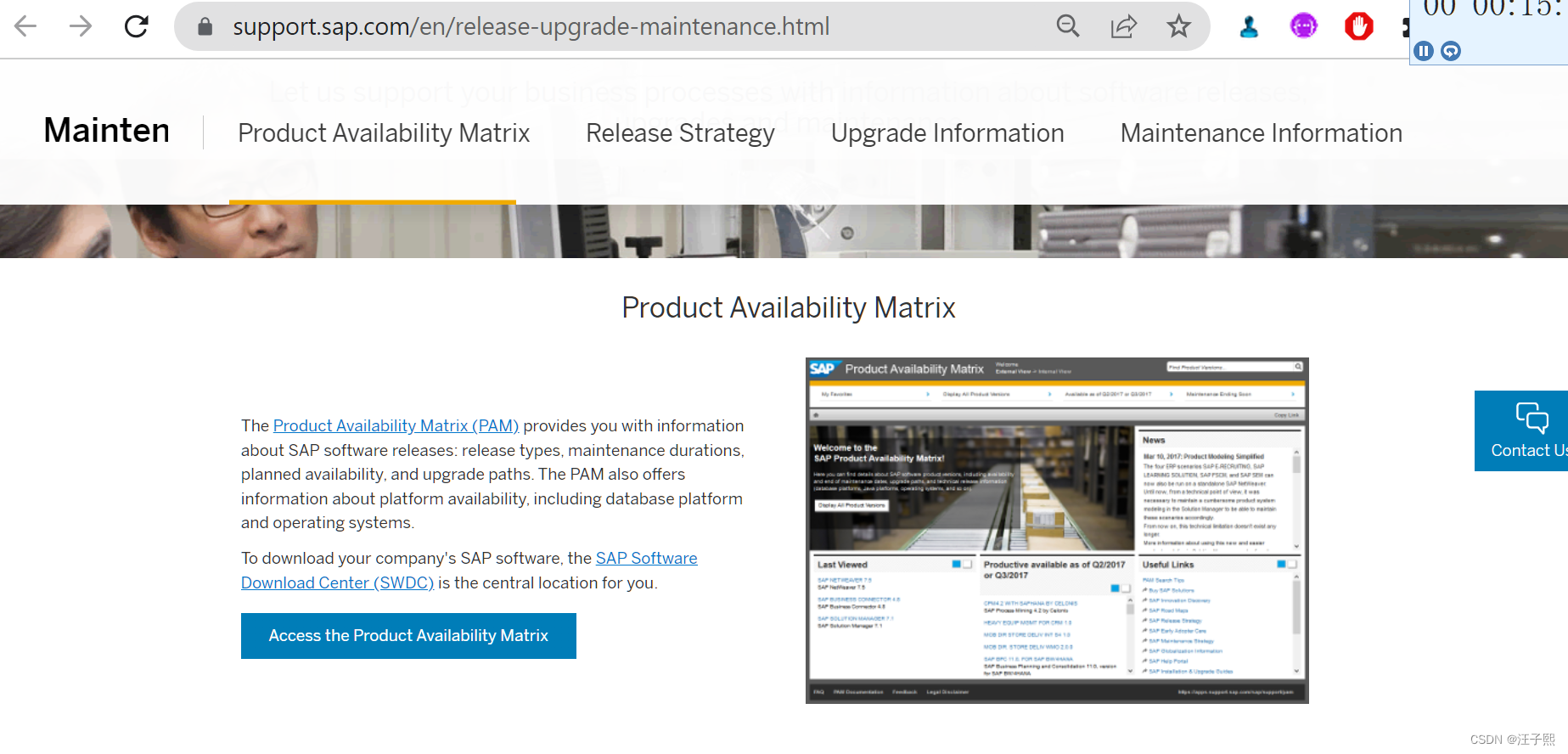In software development, the Product Availability Matrix (PAM) is a key document that provides detailed information about a product's availability, compatibility, support, and other key details. Typically, PAMs are created and maintained by product managers, project managers, or others responsible for product lifecycle management.
For example, the following picture is the home page of SAP's Product Availability Matrix website:

A typical product availability matrix might contain the following information:
-
Supported Operating Systems: This section lists the operating systems on which the software will run. For example, an application may have been tested and confirmed to work on Windows 10, macOS Catalina, and Ubuntu 18.04.
-
Supported databases: If the software needs to interact with databases, then PAM should list which database versions are supported. For example, MySQL 5.7, PostgreSQL 12.0, and Oracle Database 19c might be listed.
-
Supported browsers: For web applications, PAM should indicate which browsers it should run on. For example, Chrome 80, Firefox 74, and Safari 13 might be listed.
-
Hardware requirements: PAM may list the minimum and recommended hardware configurations required to run the software, such as CPU, memory, hard disk space, etc.
-
Third-party software dependencies: If the software depends on specific versions of third-party libraries or frameworks, such as .NET Framework, Java Runtime Environment or Python, then this information should also be included in PAM.
-
Compatibility Information: This section of information describes the product's compatibility with other software products. For example, a plugin or extension might need to work with a specific version of the main program.
-
Supported Languages: This section lists the language versions supported by the software.
-
Supported cloud platforms: If the software can run on a cloud, such as AWS, Google Cloud Platform, or Microsoft Azure, then the PAM should list supported cloud platforms and services.
For example, suppose we are developing a web application called "MyWebApp" whose PAM might contain the following information:
- Supported operating systems: Windows 10, macOS Catalina, Ubuntu 18.04
- Supported databases: MySQL 5.7, PostgreSQL 12.0
- Supported browsers: Chrome 80, Firefox 74, Safari 13
- Hardware requirements:
- Minimum configuration: 2 GHz dual-core CPU, 4GB RAM, 10GB hard disk space
- Recommended configuration: 3 GHz quad-core CPU, 8GB RAM, 20GB hard disk space
- Third-party software dependency: Java Runtime Environment 8 or later
- Compatibility Information: Compatible with MyOtherApp 1.0 or higher
- Supported languages: English, French, German, Japanese, Chinese
- Supported cloud platform: AWS EC2